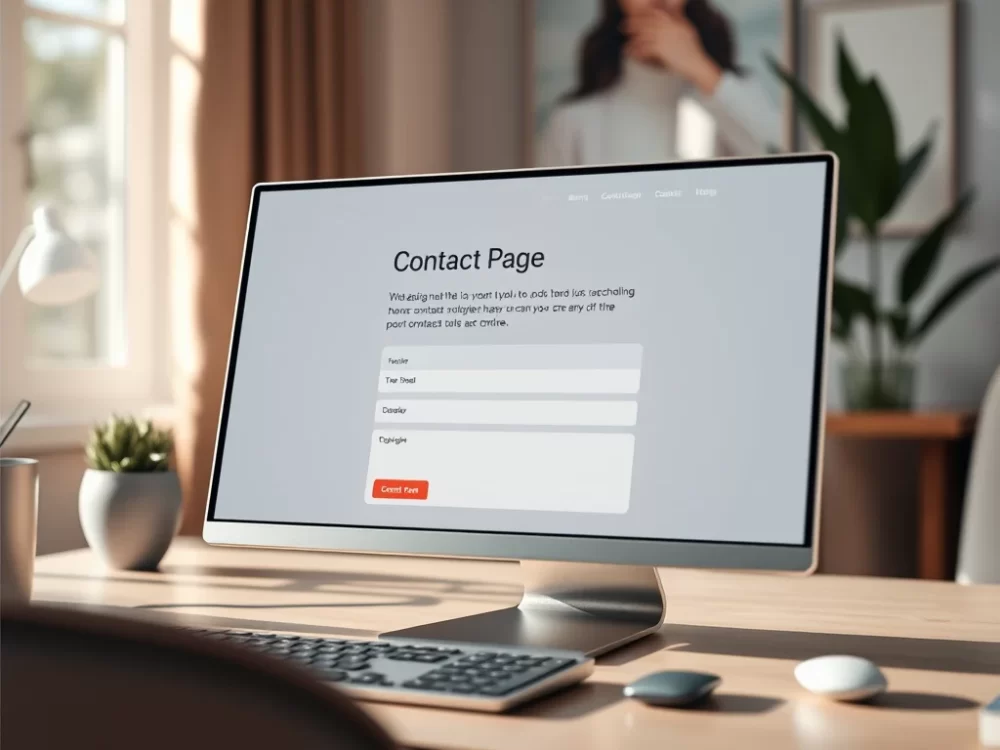A well-designed contact page is a vital component of any blog. It bridges you and your readers, allowing them to reach out with questions, feedback, or collaboration inquiries. An effective contact page enhances user experience and fosters trust and engagement with your audience. Here, we’ll explore the essential elements to consider when designing your contact page to ensure it is functional and inviting.
1. Start with a Clear Title
The first element visitors should see on your contact page is a clear and straightforward title. Phrases like “Contact Me,” “Get in Touch,” or “Reach Out” immediately inform visitors that they are in the right place to connect with you. Using a friendly tone can make the page feel more welcoming and approachable.
2. Brief Introduction
Adding a brief introduction at the top of your contact page can enhance its effectiveness:
- Personal Touch: Include a short paragraph encouraging visitors to reach out. For example, “I’d love to hear from you! If you have questions or comments, feel free to message me.” This personal touch can help break down barriers between you and your audience.
- Response Insight: It is helpful to provide insight into what visitors can expect in terms of response time. Inform them, “I aim to respond within 24-48 hours.” This sets realistic expectations and shows that you value their communication, a vital aspect in a world driven by instant gratification (Study Breaks).
3. Contact Form
A contact form is essential for facilitating communication and making it easier for visitors to reach out:
- Simple Fields: Include fields such as Name, Email, Subject, and Message. Minimizing the number of required fields makes the form user-friendly, encouraging more visitors to fill it out.
- Spam Protection: To avoid spam submissions, consider adding a CAPTCHA or a simple quiz question only humans can answer, such as “What color is the sky?”
- Mobile Responsiveness: Ensure the contact form is easily accessible on mobile devices. Most users today access websites through smartphones, so a responsive design is critical for usability.
4. Alternative Contact Methods
While a contact form is essential, offering additional methods for readers to reach you can further enhance engagement:
- Email Address: If comfortable, include your email address clearly on the page. This enables visitors to reach out directly if they prefer not to use the contact form.
- Social Media Links: List your social media profiles, such as Twitter, Instagram, or LinkedIn. This opens up alternative avenues for engagement and connection with your audience.
- Professional Tools: If applicable, integrate tools like Calendly or a Google Calendar link for scheduling meetings. This is particularly useful for collaboration inquiries or consultations.
5. Provide FAQs
Including a section for frequently asked questions (FAQs) can reduce the number of repetitive inquiries and enhance user experience:
- Anticipate Common Questions: Consider what visitors might commonly ask about collaborations, guest posts, or your blog’s content.
- Direct Answers: Clear and concise responses to these questions save you and your readers time. Moreover, frequently answering common questions builds authority and clarifies expectations.
6. Design Elements
The overall design of your contact page should complement the rest of your blog:
- Consistent Branding: Ensure the colors, fonts, and layout are consistent with your blog’s overall theme. A cohesive design helps reinforce your brand identity and creates a smoother user experience.
- Visual Appeal: Use relevant imagery or graphics to make the page visually inviting. A friendly image of yourself can enhance the personal connection with visitors.
Conclusion
A well-designed contact page is essential for encouraging communication and engagement with your audience. By including a clear title, a brief introduction, an accessible contact form, alternative contact methods, and an FAQ section, you create a functional and inviting space for visitors to reach out. Investing time in your contact page can foster trust, facilitate connections, and ultimately contribute to the growth of your blog community. As stated by The Balance, a strong call-to-action can significantly enhance user engagement, ultimately driving positive interactions (The Balance).
Melinda Osman is the founder of Qwery M, a dynamic platform dedicated to empowering individuals through career counseling, lifestyle tips, and blogging guidance. With a genuine passion for helping others succeed, Melinda leverages her experience and expertise to support personal and professional growth, inspiring her community every day.
Last updated on April 18th, 2025 at 07:36 am
Discover more from Qwery M
Subscribe to get the latest posts sent to your email.





